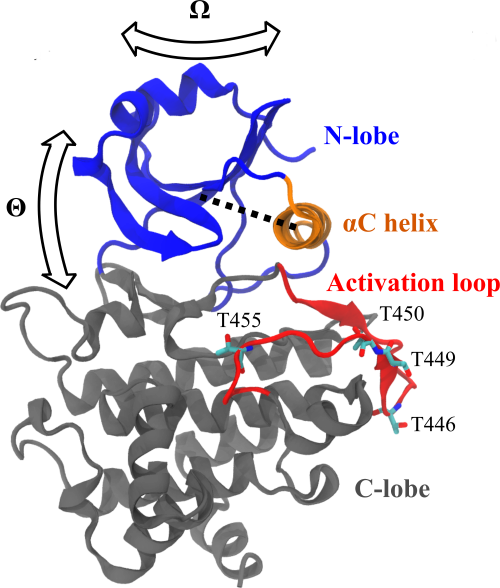Structural consequences of multisite phosphorylation in the BAK1 kinase domain

BibTeX
Multisite phosphorylation is an important mechanism of post-translational control of protein kinases. The effects of combinations of possible phosphorylation states on protein kinase activity are difficult to study experimentally because of challenges in isolating a particular phosphorylation state; surprising little effort on this topic has been expended in computational studies. To understand the effects of multisite phosphorylation on the plant protein kinase brassinosteroid insensitive 1-associated kinase 1 (BAK1) conformational ensemble, we performed Gaussian accelerated molecular dynamics simulations on eight BAK1 mod-forms involving phosphorylation of the four activation-loop threonine residues and binding of ATP-Mg2+. We find that unphosphorylated BAK1 transitions into an inactive conformation with a “cracked” activation loop and with the αC helix swung away from the active site. T450 phosphorylation can prevent the activation loop from cracking and keep the αC helix in an active-like conformation, whereas phosphorylation of T455 only slightly stabilizes the activation loop. There is a general trend of reduced flexibility in interlobe motion with increased phosphorylation. Interestingly, the αC helix is destabilized when the activation loop is fully phosphorylated but is again stabilized with ATP-Mg2+ bound. Our results provide insight into the mechanism of phosphorylation-controlled BAK1 activation while at the same time represent the first, to our knowledge, comprehensive, comparative study of the effects of combinatorial phosphorylation states on protein kinase conformational dynamics.

